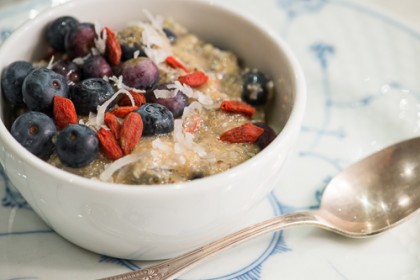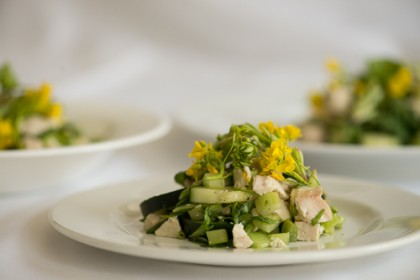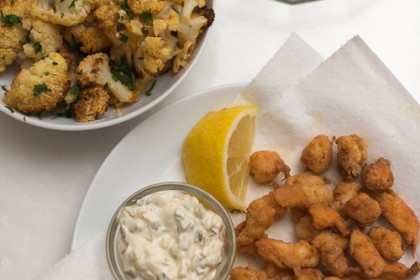by J.S. Amie
Why Spiralize?
Beyond fast, easy, delicious and fun to make—which kids do love because of interesting shapes and texture—spiralized noodles have many significant health and nutritional benefits:
-
low carb
-
gluten-free
-
paleo-friendly
-
vegan / vegetarian
-
more vitamins than traditional noodles
Tips on How to Spiralize
Basic Types of Spiralizers
There are many spiralizers available on the market today. The main two types are:
Veggetti-style Spiralizers
This inventive, hourglass-shaped slicer is easy to use, easy to clean, and lightweight enough to carry with you when you travel. If you can imagine a pencil sharpener large enough to accommodate a zucchini, then you’ve just imagined the Veggetti Spiral Vegetable Slicer and how it works.
Paderno-style Spiralizers
The Paderno Spiralizer is a hand-powered slicer, which means it is neither battery-powered nor electrical. It has more blades and is therefore more versatile than the Veggetti-style spiralizer. About the size of a counter-top mixer, it is safer than other hand-held vegetable spiralizers because the vegetable is inserted into the machine, and directed toward the cutting blades by the action of a turning crank—the cook’s hands never get anywhere near the sharp surfaces.
Types of Cuts/Noodles which Spiralizers Make
You and your spiralizer can make the following using the proper technique:
-
Thin spaghetti-sized strands, rings and crescents
-
Thick udon or linguini-size strands, rings and crescents
-
Wide, flat strands, rings and crescents
How To Prepare and Cook Your Vegetable “Pasta”
Cooking your vegetable pasta is even easier than cooking traditional pasta! Here’s how:
Raw
Most of the pasta you make from fruits and vegetables can be eaten raw. The exceptions are potatoes, sweet potatoes, and eggplant. They should be cooked before eating to destroy the bacteria.
Note: For most thin noodles made with soft vegetables (zucchini, yellow squash), mixing the warm or piping hot sauce with the raw noodles “cooks” them to just the desired “al dente” firmness.
Warmed
Warm the pasta strands by microwaving them for a few seconds in a microwave-safe bowl or by quickly “blanching” them in hot water before serving. To blanch, bring a large pot of water to a boil. When the water is boiling, drop the noodles in and continue to heat for anywhere from 30 seconds to 10 minutes, depending on the vegetable. (Soft vegetables like zucchini or yellow squash take about 30 seconds; carrots take several minutes, beets can take as long as 10 minutes.)
Boiled
You will not need to “boil” your vegetable pasta unless you like the texture soft, bordering on mushy. Some vegetable pasta–white potatoes for instance–will simply fall apart after being boiled. An alternative cooking method would be “steaming,” where the vegetable pasta is put in a wire steaming basket and cooked over boiling water without actually being immersed in it.
TIP: if you undercook the pasta just a little, then drizzle with virgin olive oil, you’ll never want to cook it any other way.
Sauteed
This is a simple technique for cooking the pasta and other ingredients quickly. The ingredients are placed in a pan—either a saucepan or a skillet—with a little fat or oil and cooked over high heat. The trick with this method is to stir often to prevent the ingredients from burning.
Stir-Fried
Stir-frying is a quick-cooking method that requires very little fat. The secret to successful stir-fries is pre-prep. All the ingredients should be chopped or cut as needed so that everything will cook quickly. Woks are purpose-built for stir-frying, but any large, heavy skillet will do as well.
Baked
Pasta in traditional dishes like mac and cheese has to be boiled first before being combined with the cheese sauce and baked. With vegetable noodles, you can simply add the raw noodles to the ingredients—they’ll cook while the dish is baking, thus saving you a step. Keep in mind that vegetable noodles cook much more quickly than wheat pasta, therefore your baking times will be considerably shorter than usual.
Why not try Spiralizing?
You can start even without a spiralizer!
Pick up a free introductory spiralizer QuickStart guide at: http://www.healthyhappyfoodieblog.com/ogff-quickstart-guide/





Anonymous - What a great idea!